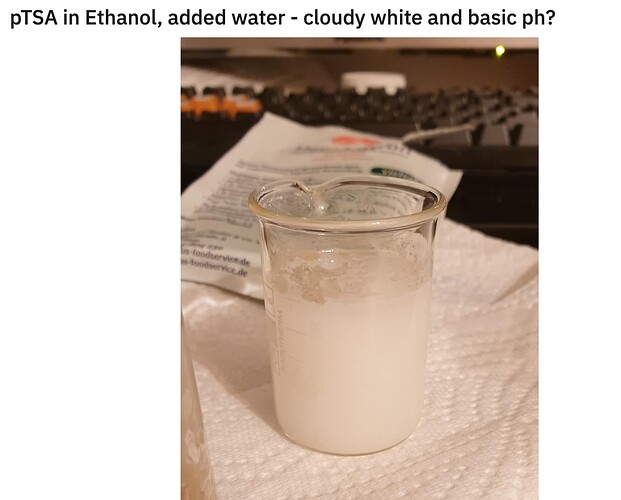the ol alpha via beta Cl intermediate shows its face once more. any alternatives to t-AmylOK for that last step?
Well to be honest, I saw it linked in another thread with a paper associated with it. I read the paper, did some research on AlCl3 and decided it wasn’t too toxic to work with and decided to give it a go. The fact that it is used in deodorant helped as well. I had heard of ZnCl2 being used as well, but haven’t played with it yet. Sulfonic acids really do seem to perform the best for isomerization of CBD but obviously do not have as good of selectivity. Looking at the 4 noid graphs we made samping on 15min windows suggests that trying to use pTSA to make d9 is like trying to catch a falling knife at just the right point. The problem was that it takes 3min to work up a sample and 12min to run the sample. In 15min the concentrations change quite a bit. Especially in the first hour of RXN.
I tried Zinc Chloride…minimal success.
While I haven’t tried it, that seems to be the consensus. I was really hoping for a magic bullet instead of having to use TIBA!
I’ve got a grip of tiba here, but was also looking for another way to D9Valhalla
Have you played with it yet?
Yeah lil bit
Worth exploring?
There has to be another way…
Absolutely yes. Solvent choice is paramount.
Dm me?
2-metyl-2-butanol. Possibly hexafluoroisopropanol. But the latter is much more expensive and dind’t try it yet. Not in this economy.
The reaction is slooooow and it looks like it has to be. Low and slow with excess of REALLY dry HCL does the job. But it’s not easily scalable.
Grignard way on the other hand should be easier to scale in theory.
Thank you. I’ll give that a deeper look.
Hey guys!
I’m from Team Reddit and we are now cooking 70-80% thc in 5-10 min with zeolite!
1 g of CBD + 0,5g zeolite (foodgrade) is heated under argon for 5-10 min at 100C
The zeolite is very easily separated because of its insoluble in solvents.
If you want more d9 you heat it for 5 min, if you want more d8 you heat it for 10 min
ftfy brOzone
Conversion
In certain embodiments, the acidicly enriched solid support particles are not SAPO-34. In certain embodiments, the acidicly enriched solid support particles are not ZSM-5. The reaction proceeds with high conversion outcomes in refluxed heptane over a period of 1 h. Surprisingly, the transformation is significantly accelerated when conducted in the melt, without any solvent. Using aluminosilicates helps to stabilize THC-9 vs. THC-8 reaction products. In only 5 minutes time, the conversion rate was already about 80% with THC-9/THC-8 ratio of 2: 1. The outcomes of catalytic transformations in different reaction conditions for the most active materials, i.e., Zeolite Y, SAPO-11 and Zeolite Beta are summarized in the Tables 5-7.
Table 5. Reaction Products of CBD-to-THC Conversion Catalyzed by
Aluminophosphosilicate SAPO-11
Table 6. Reaction Products of CBD-to-THC Conversion Catalyzed by Aluminosilicate Zeolite Y
Table 7. Reaction Products of CBD-to-THC Conversion Catalyzed by Aluminosilicate
Zeolite Beta
you might get better results (yield-wise) running much lower temp (maybe even room temp) and then stopping reaction at the point where a beam test shows a peach color. Use the beam test to know when all CBD has converted. Then when you see a peach color, you’ll know there’s no CBD and at this point in time is most likely your highest yield of THC. Search on the forum for beam test, there’s a guide somewhere.
![]()
![]()
![]()
Oh god.
I wish there was some word for an emotion that combined hilarity and abject horror.





